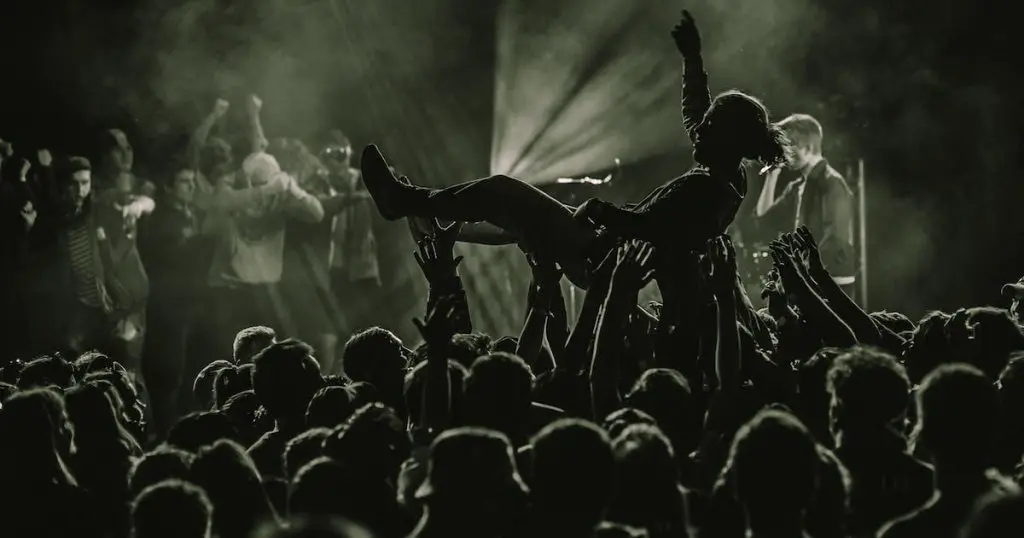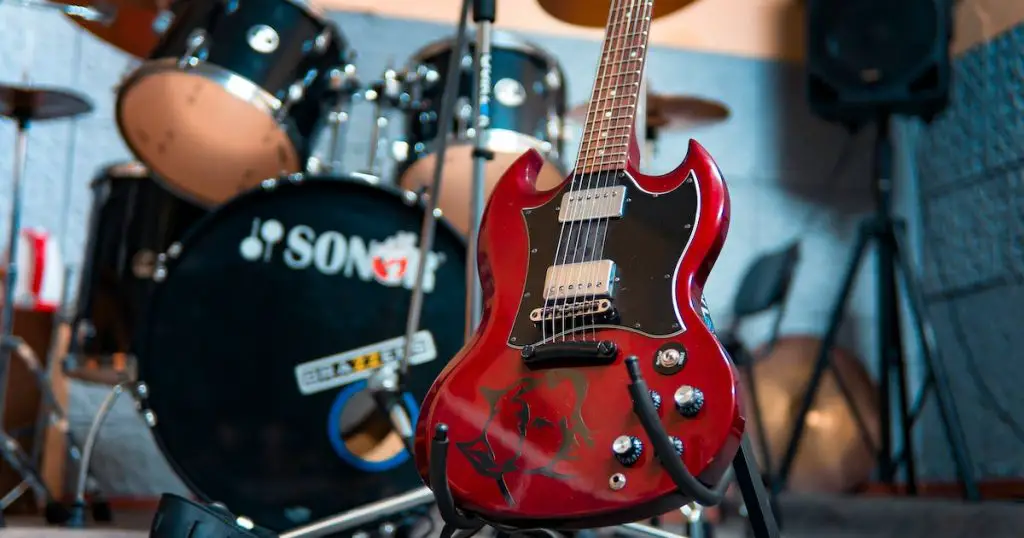In the heart of Prescott, a silent revolution is blossoming in the hallways and classrooms of its schools, one that harmonizes the academic with the artistic, melding the cerebral with the creative.
Arts and music programs in Prescott education are not just extracurricular activities; they are integral components of a holistic educational framework. These programs offer students a chance to explore their talents, express themselves, and understand the world through a different lens.

In this comprehensive guide, we delve deep into the past, present, and future of these programs, unveiling their significance in shaping well-rounded, culturally enriched citizens.
The Landscape of Arts Education in Prescott
The journey of arts education in Prescott is a story of continual growth and evolution. Initially limited and often overshadowed by more traditional academic subjects, these programs have undergone a remarkable transformation over the years.
The early days of arts education in Prescott were modest, focusing primarily on basic skills and traditional forms. However, as the appreciation for the arts grew, so did the breadth and depth of the programs.
This evolution mirrors a broader national trend, recognizing the importance of arts in education, not just for cultivating artistic talents but also for enhancing academic achievement and personal development.
Today, the state of arts programs in Prescott are vibrant and diverse, reflecting a commitment to fostering both academic excellence and creative expression. These programs span various disciplines, from visual arts and music to theater and dance, offering students ample opportunities to explore and hone their artistic skills.
The range of these programs is a testament to the growing understanding of the importance of arts in a well-rounded education. They stand as a beacon of creativity and innovation, preparing students not just for academic success but for a life enriched with cultural and artistic appreciation.
Funding and resources play a critical role in the sustenance and quality of arts programs. In Prescott, this support comes from a mix of government, private, and community sources.
This collaborative funding effort ensures that arts education is accessible and of high quality, enabling these programs to thrive and evolve. Effective management of these resources is crucial, ensuring that every dollar spent maximizes the impact on students’ artistic and personal growth.
Despite budget constraints and other challenges, the commitment of the Prescott community to arts education remains unwavering, showcasing a collective belief in the transformative power of the arts.
Music Education in Prescott Schools
The rich tapestry of music education in Prescott is a story of both tradition and innovation. From its classical roots, Prescott’s music programs have evolved to incorporate a wide range of genres and styles, reflecting the diverse cultural landscape of the community.
This evolution in music education is not just about adopting new styles but also about embracing the educational values music brings. The curriculum spans a variety of musical disciplines, allowing students to explore everything from classical orchestration to modern digital music production.

In Prescott, music education begins in the early years of schooling and grows more complex and nuanced as students progress through the system. Elementary programs focus on foundational skills and exposure to various musical styles, while middle and high school programs offer more specialized and in-depth study.
These programs are not just about learning to play instruments or read music; they are about understanding music’s role in history, culture, and personal expression.
Furthermore, extracurricular opportunities such as choirs, bands, and orchestras offer students a chance to apply their skills in real-world settings, fostering a sense of community and collaboration.
The impact of these music programs extends beyond mere skill acquisition. Studies have shown that engaging in music education can enhance cognitive development, improve academic performance, and bolster social-emotional learning.
In Prescott, these outcomes are evident in the success stories of students who have pursued music at higher levels of education and in their careers. The dedication of music educators in Prescott, coupled with the robust curriculum, ensures that music education is not just an academic subject but a vital part of a student’s overall development.
Visual and Performing Arts in Education
Visual arts in Prescott encompass a wide range of mediums and techniques, offering students a broad canvas to express their creativity. From traditional painting and sculpture to digital art and multimedia projects, the curriculum is designed to foster technical skills as well as artistic vision.
The success of these programs is visible in the remarkable projects and artwork produced by students, which often find their way into local exhibitions and competitions, showcasing the depth of talent nurtured in Prescott schools.
The performing arts, encompassing both drama and dance, play a pivotal role in Prescott’s educational landscape. These programs offer students a platform to explore various aspects of performance, from acting and direction to choreography and stage management.
Beyond the artistic skills, these programs teach students valuable life skills such as confidence, collaboration, and communication. The impact of these programs is not just confined to the stage but extends to the community, where school productions often become local events, celebrated and supported by residents.
Integrating technology into arts education has opened new avenues for creativity and expression in Prescott. Digital art programs and media studies offer students the chance to explore the intersection of art and technology, an increasingly relevant field in today’s digital world.

integration not only enhances the artistic experience but also prepares students for future careers where digital proficiency is key. The role of technology in these programs is not just about using new tools but about expanding the boundaries of what is possible in art and education.
Community and Cultural Impact
The arts and music programs in Prescott are not confined within the walls of schools; they extend into the community, creating a symbiotic relationship that enriches both. Community engagement through arts is a cornerstone of Prescott’s approach.
Collaborations with local artists and organizations bring real-world experiences to students and foster a greater appreciation of the arts within the community. Events like student art exhibitions, musical performances, and theater productions become focal points for community gatherings, bridging the gap between schools and the broader public.
Cultural impact and preservation through arts education are pivotal in Prescott. The curriculum often includes elements that celebrate and educate about local heritage, fostering a sense of pride and continuity.
This approach not only enriches students’ understanding of their own culture but also promotes cultural sensitivity and awareness, preparing them to be global citizens. The arts and music programs in Prescott thus become tools not just for education but for cultural preservation and understanding.
Challenges and Future Directions
Despite the successes, arts and music programs in Prescott face their share of challenges. Budget constraints and funding issues are perennial concerns, with arts programs often being vulnerable to cuts.
Balancing the demands of academic rigor with the need for comprehensive arts education also poses a challenge. These issues require constant advocacy and innovative solutions to ensure that arts and music remain integral to Prescott’s educational landscape.
Looking to the future, the arts and music education in Prescott is poised for continued innovation and growth. Emerging trends, such as the integration of technology and interdisciplinary learning, offer new opportunities for program development.
Planning for sustainable and inclusive programs is key to ensuring that these opportunities are accessible to all students, regardless of background. The future of arts and music education in Prescott is bright, with a continued focus on adaptation and growth to meet the evolving needs of students and the community.
In-Depth Perspectives
Gaining insights from those at the forefront of arts and music education provides a deeper understanding of the impact and challenges of these programs. Interviews with arts educators in Prescott reveal both the rewards and hurdles of teaching arts.
These educators speak of the joy in fostering creativity and witnessing personal growth in students but also acknowledge the challenges of limited resources and navigating educational policies.
Student voices offer a unique perspective on the impact of arts on learners. Testimonials and experiences shared by students highlight how arts education has shaped their personal and academic growth.
These stories often reveal transformative experiences, showcasing how arts and music education can profoundly influence a student’s trajectory, instilling confidence, creativity, and a sense of purpose.
Comparative Analysis
Such comparisons are invaluable in fostering a culture of continuous improvement and innovation in Prescott’s arts and music programs. By examining how similar programs operate in different educational environments, Prescott can adopt best practices and adapt them to meet local needs and resources.
This not only ensures the vitality of Prescott’s arts and music education but also keeps it at the forefront of educational excellence.
However, it’s crucial to note that while comparisons can be enlightening, the unique context and community needs of Prescott must always guide any adaptations or changes. The goal is not to replicate but to learn and enhance the existing programs, tailoring them to the evolving cultural and educational landscape of Prescott.
Policy and Advocacy
The role of educational policies in shaping arts and music programs cannot be overstated. Current policies at the local, state, and national levels have significant implications for how these programs are funded, structured, and valued. Understanding these policies is crucial for educators, parents, and community members who advocate for the importance of arts in education.
Advocacy efforts are essential in ensuring that arts and music remain a priority in educational planning and funding. Building partnerships for stronger programs is a key strategy in this advocacy.
The role of public-private partnerships, for example, can bring additional resources and perspectives to arts education. Engaging the community in policy discussions ensures that a wide range of voices are heard and that the programs meet the diverse needs of all students.
FAQs
Before concluding, it’s important to address some frequently asked questions about arts and music programs in Prescott education:
What are the core benefits of arts and music education in Prescott?
Enhancing creativity, improving academic performance, and fostering emotional intelligence.
How can the community support arts and music programs in schools?
Through advocacy, volunteering, and financial contributions.
Are there opportunities for students to pursue arts beyond the classroom?
Yes, including extracurricular activities, community collaborations, and local events.
How do arts and music programs in Prescott prepare students for future careers?
By developing transferable skills such as creativity, teamwork, and problem-solving.
What are the biggest challenges currently facing arts and music educators in Prescott?
Budget constraints, balancing academic and artistic goals, and adapting to new educational trends.
Conclusion
In conclusion, arts and music programs in Prescott education represent a vibrant and essential component of the holistic development of students. These programs not only foster artistic talent but also contribute to the overall academic and personal growth of young learners.
The challenges facing these programs, while significant, are met with innovation, dedication, and community support. As we look to the future, it is clear that arts and music will continue to play a crucial role in shaping well-rounded, culturally aware, and creatively empowered individuals in Prescott.



Leave a Comment
You must be logged in to post a comment.